We may receive a commission when you use our affiliate links. However, this does not impact our recommendations.
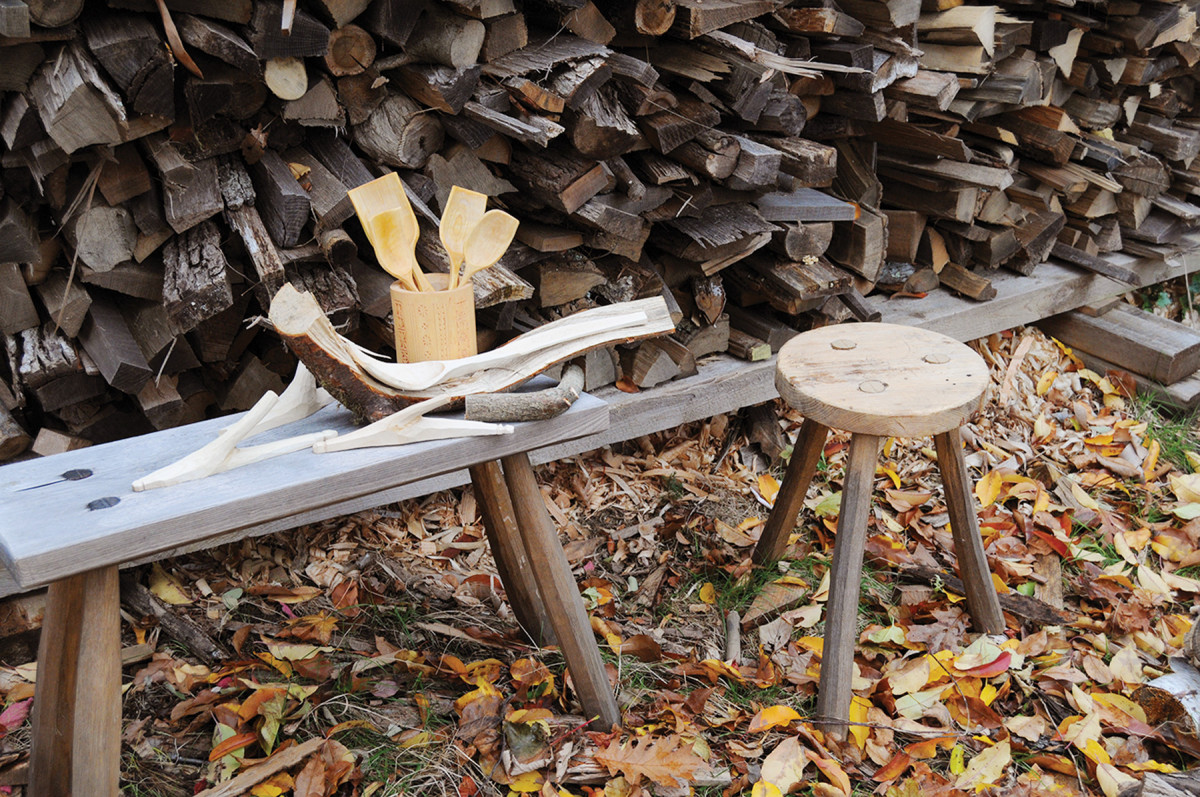
Project in every piece? The firewood pile is a great source of inspiration for low benches, spoons, hooks, shrink pots and more…which makes it an ever-dwindling source for heat.
Look to your firewood pile for plenty of project inspiration.
I’ve been cutting up my leftover bits of green wood for firewood to use in my new workshop. It’s not going well. I have a feeling that we green woodworkers freeze to death in the end. It’s because when we’re splitting firewood, we keep finding interesting pieces that will make good bench legs, shrink pots or what-have-you. And of course, spoons – everything is a spoon. Many of the smaller items that I keep seeing emerge in the firewood are things I learned while studying spoon carving with my Swedish friends.
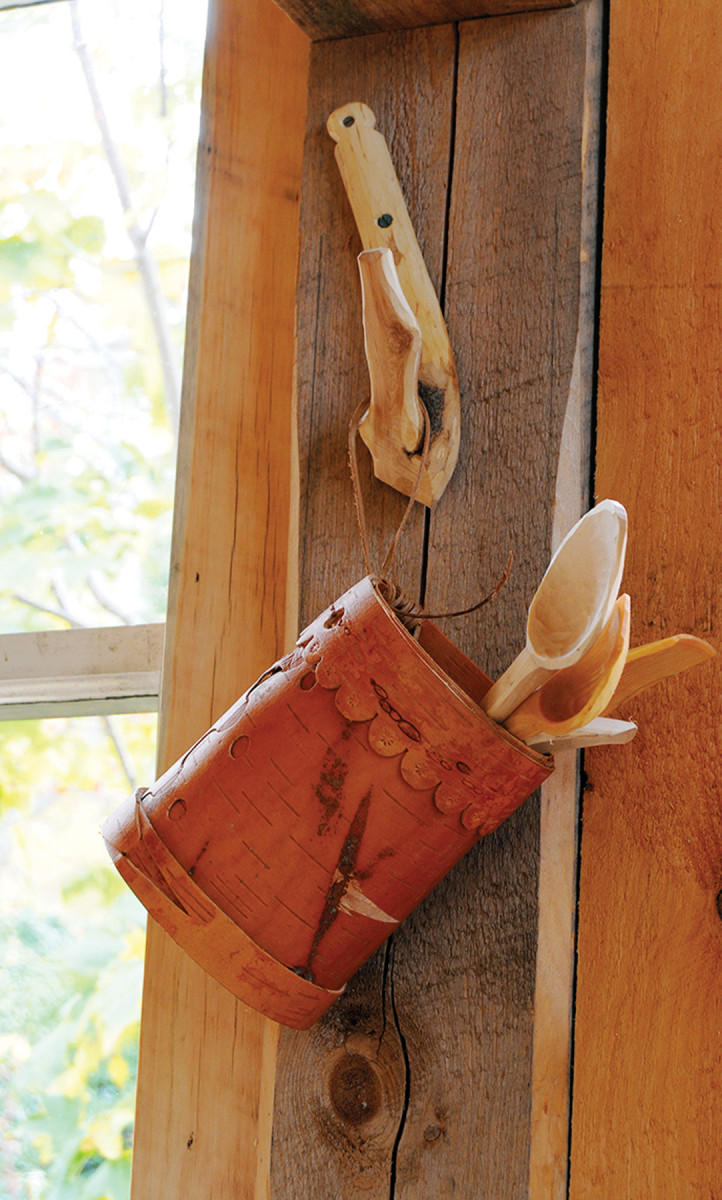
Hooks galore. I use hooks around the shop to hang baskets, tools and other gear.
I use low benches around the yard for woodworking, seating and other tasks. There might be six or seven of them right now, I really can’t have too many.
For the bench, I tend to use softwoods, although a few of mine are oak too. For the legs, I prefer white oak; it lasts longer than anything else that grows around here in southern New England. I have some that are in red oak – they work fine, but will decay before too many years and need replacing. For these legs, the pieces I like best have curving grain, just the sort of thing I reject when splitting furniture stock. So lo and behold, I often run into them in the firewood pile. I tend to hew and shave them and then let them sit around to dry before fitting them in the bench tops. Mine taper at the top to match the mortises, which I bore with a large auger. I taper the mortises from below with a wheelwright’s reamer.
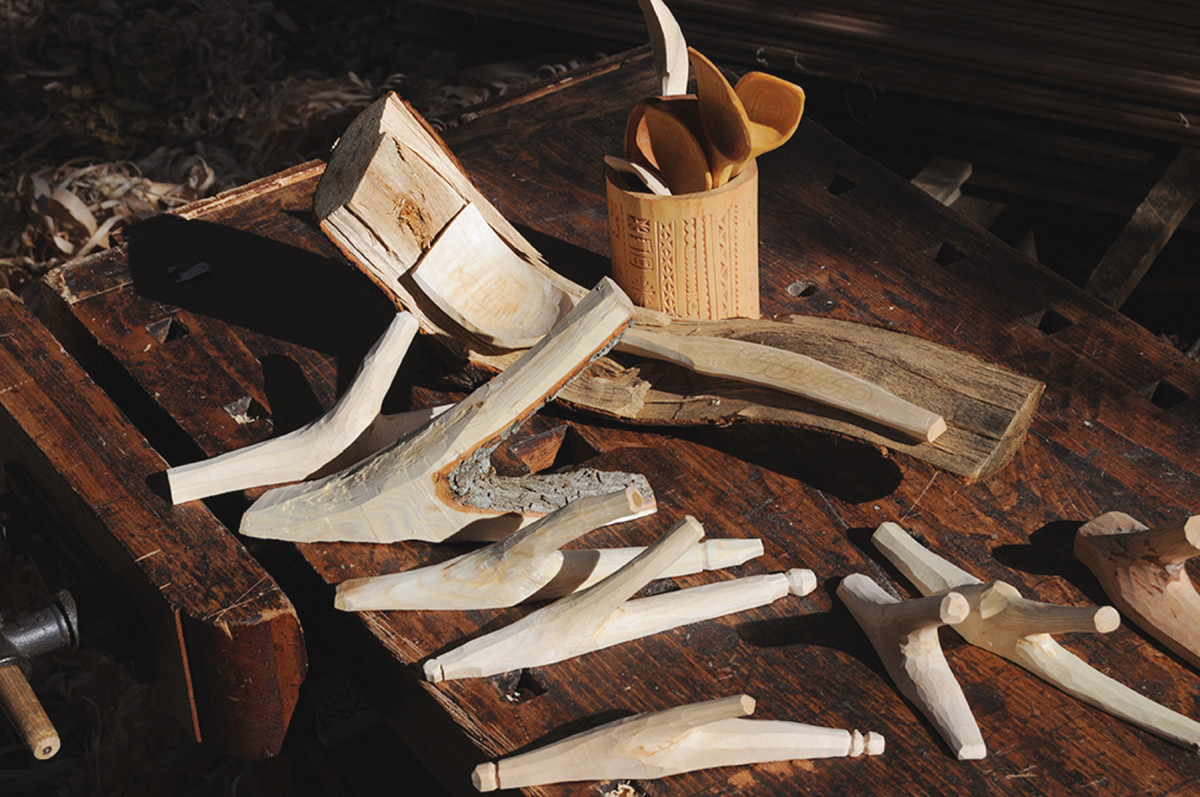
Perfect crook. A good spoon comes from a natural bend. Here, you see a finished spoon nestled in the remainder of the piece from which it came (with some hooks in front).
Even the straight-grained offcuts can distract the firewood cutter. Clear short sections are sometimes crying out to be shrink pots. I go through bouts of shrink-pot making, and thankfully right now I have lots of them in progress, so I can leave them alone for a little while. Score some for the firewood stack.
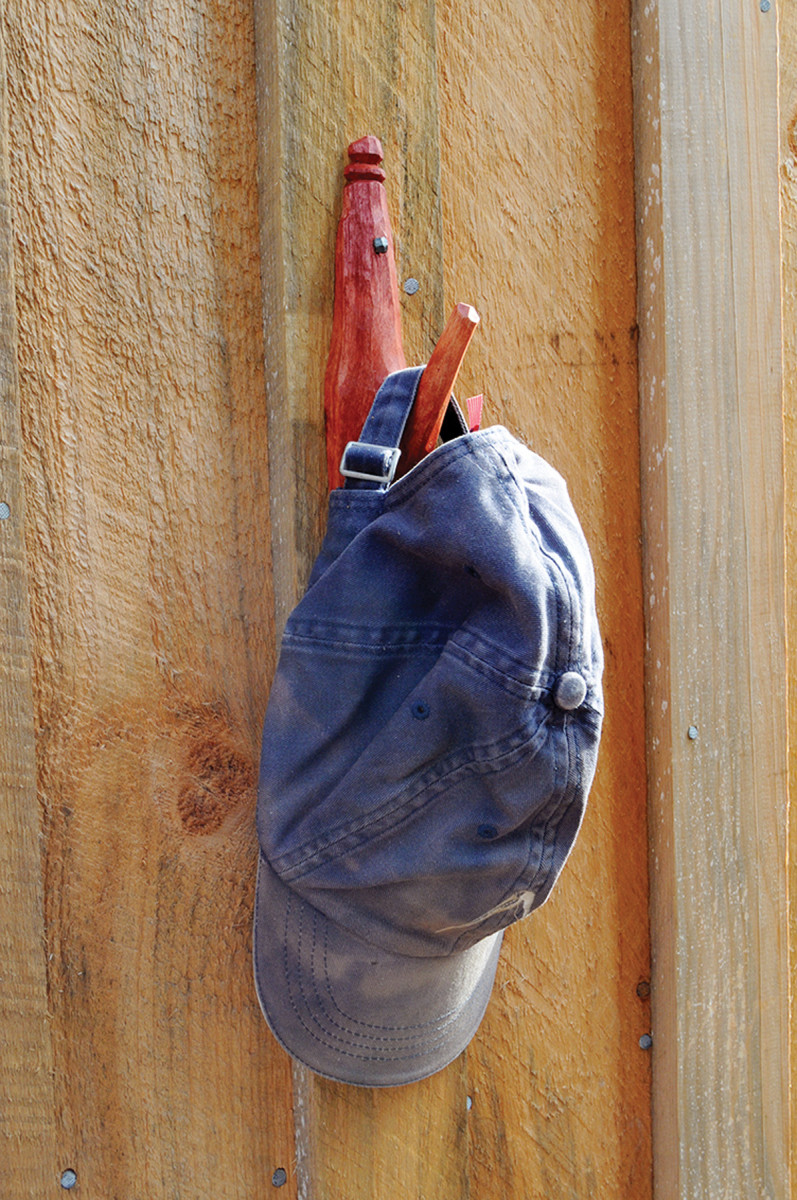
Wherever I lay my hat…I have hooks from the firewood pile all over my house and shop, inside and out.
The spoon wood that I use is usually cherry, apple or birch. The birch, with its low resistance to decay, has a very short shelf life, so I try to get the spoons out of that quickly. The cherry can sit around longer, and the apple is in-between. My favorite spoon blank comes from a crook, a piece of limb-wood that has just the right bend in its growth to create the sweep, or crank, for the spoon’s profile. But there’s lots of branches, limbs and trunk-wood that doesn’t quite have the right shape or thickness. There are other uses for those shapes, and one of my favorites is the clothes hook.
This is usually a small limb branching from either another limb or the main trunk. If it’s at an angle too steep for spoon wood, or one section is too thin to make the right split, then it becomes a hook. Mine tend to be pretty simple, usually just one “hook” to each. Chip carving and shaped finials lend this household fitting a bit of flash.
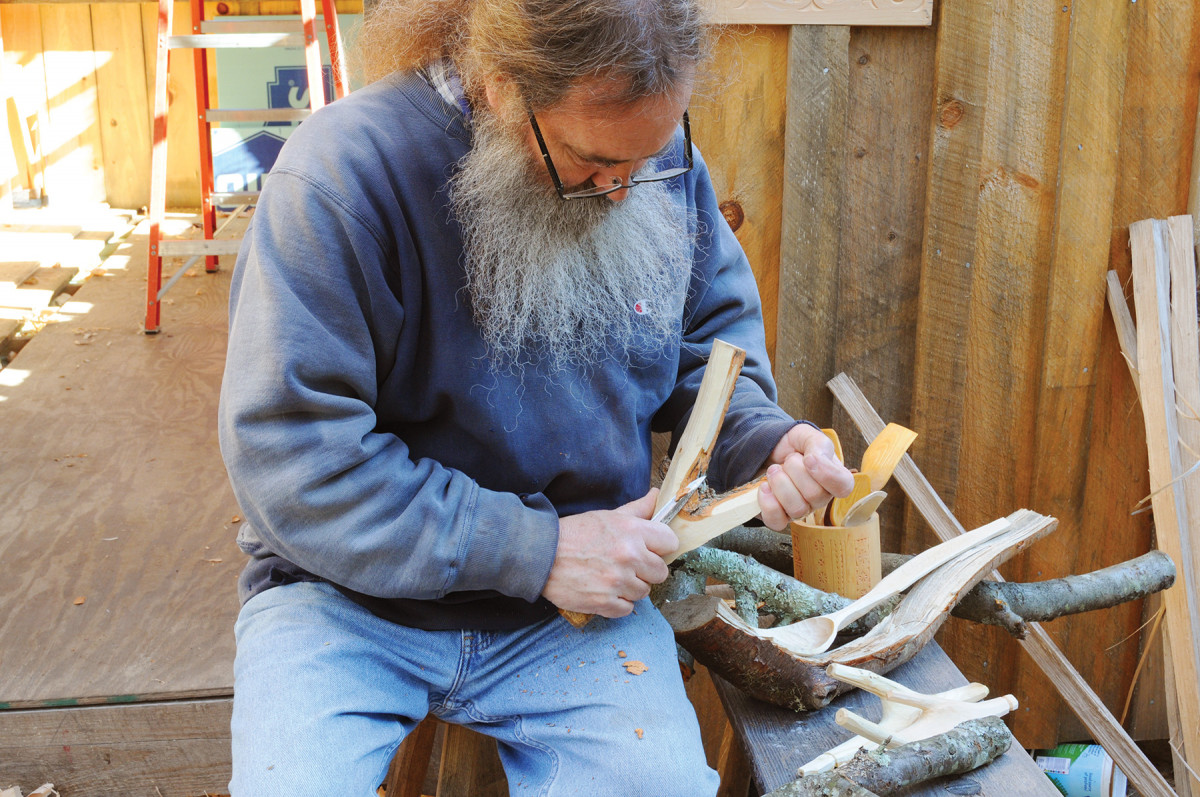
De-layer. After hewing the back flat, I use a Sloyd knife to slice off the bark and the cambium layer, then to shape the hook.
“Clothes hook” is a misnomer; these can be used to hang all sorts of things – tools, clothes, baskets, bags – whatever you might hang on a hook. These things are addictive beyond words.
I learned them from my Swedish spoon-carving friends; in Sweden these hooks are made in colors and shapes beyond the imagination.
To make one, find a branch section that has the right shape. This is green woodworking, while the wood is fresh it cuts easier than dry stock. Split the heavier side, and hew or shave away the pith in that section. The pith is the center of the limb; if left in it can lead to a split upon drying. I use a Sloyd knife to shave away the bark and the underlying cambium layer to get down to the wood.
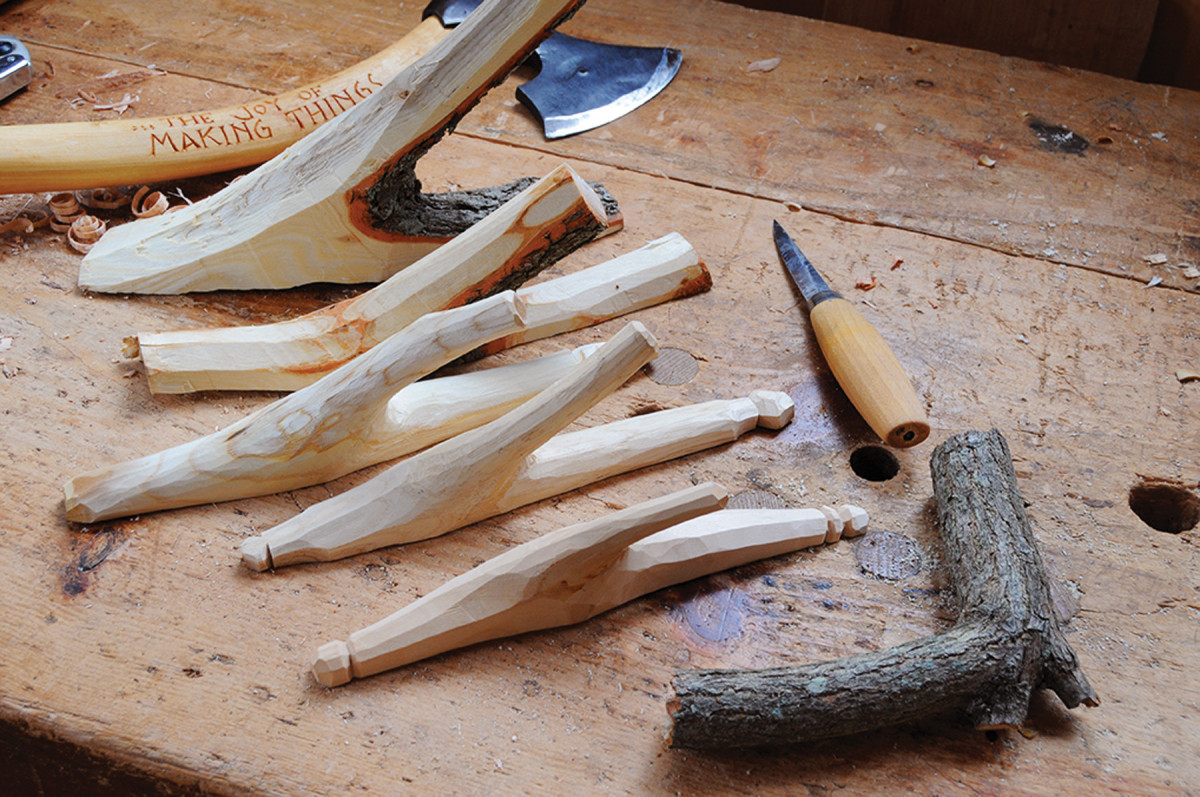
Hooks & future hooks. Look for pieces in which nature has accomplished most of the work. Then get down to the bare wood, and decorate as you please.
I try to flatten the split back so it will sit flush on the wall. Doesn’t need to be dead-flat, but I take out the major bumps. From there, I just follow the wood’s lead and shave away bits until it is slender enough to not be bulky, but still has enough wood on it for strength. Facets and bevels are fine, choppy cuts are not. Smooth strokes will leave a good finish. I use the same knife grasps and moves as in my spoon carving – there’s lots of shifting the hook this way and that, and coming at it from many different angles.
Chip carving can heighten the hook’s impact, but in use most of the decoration gets hidden. I tend to just cut some notches to create a finial at the top of the back section. Sometimes there’s an upside-down finial at the bottom end, too.
There’s other stuff in those firewood piles, but there’s only so many hours in a day, and winter is coming. I wonder if I can cut firewood with my eyes closed.
Here are some supplies and tools we find essential in our everyday work around the shop. We may receive a commission from sales referred by our links; however, we have carefully selected these products for their usefulness and quality.








